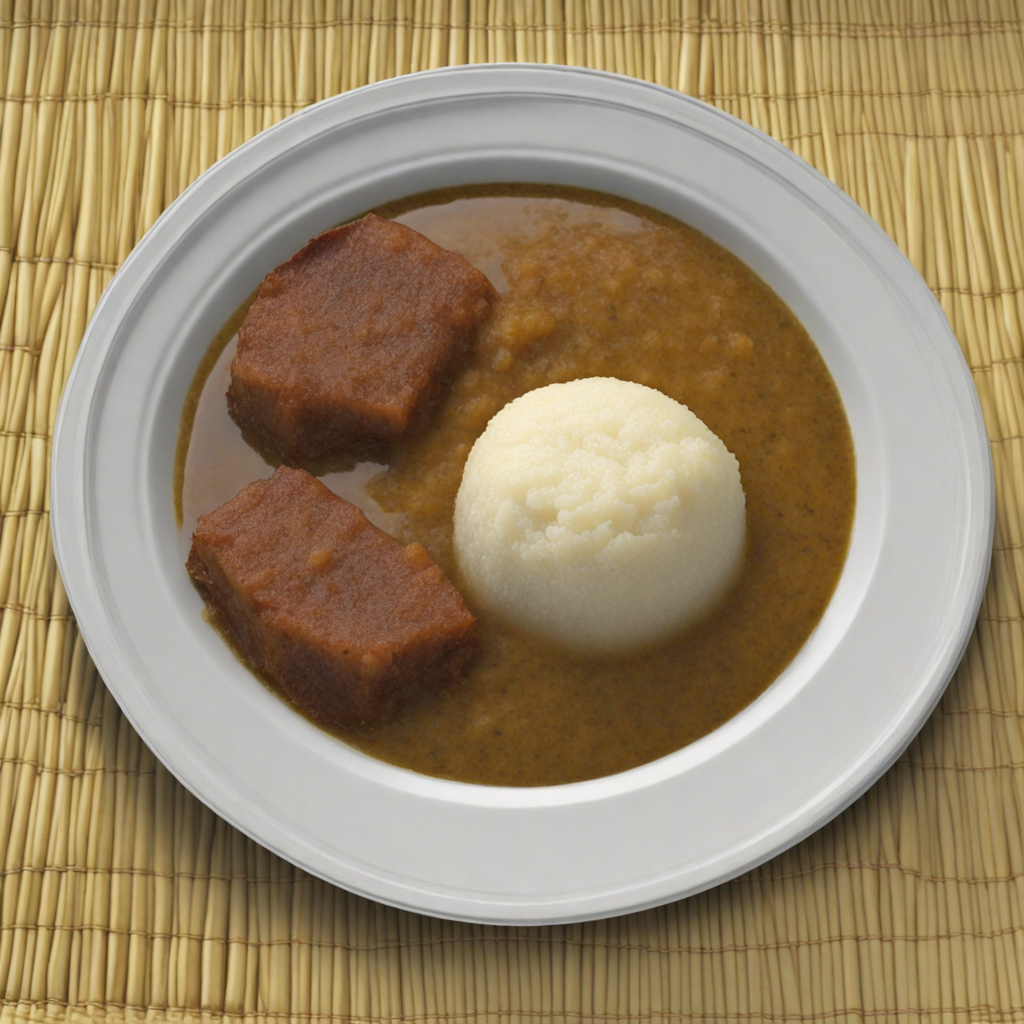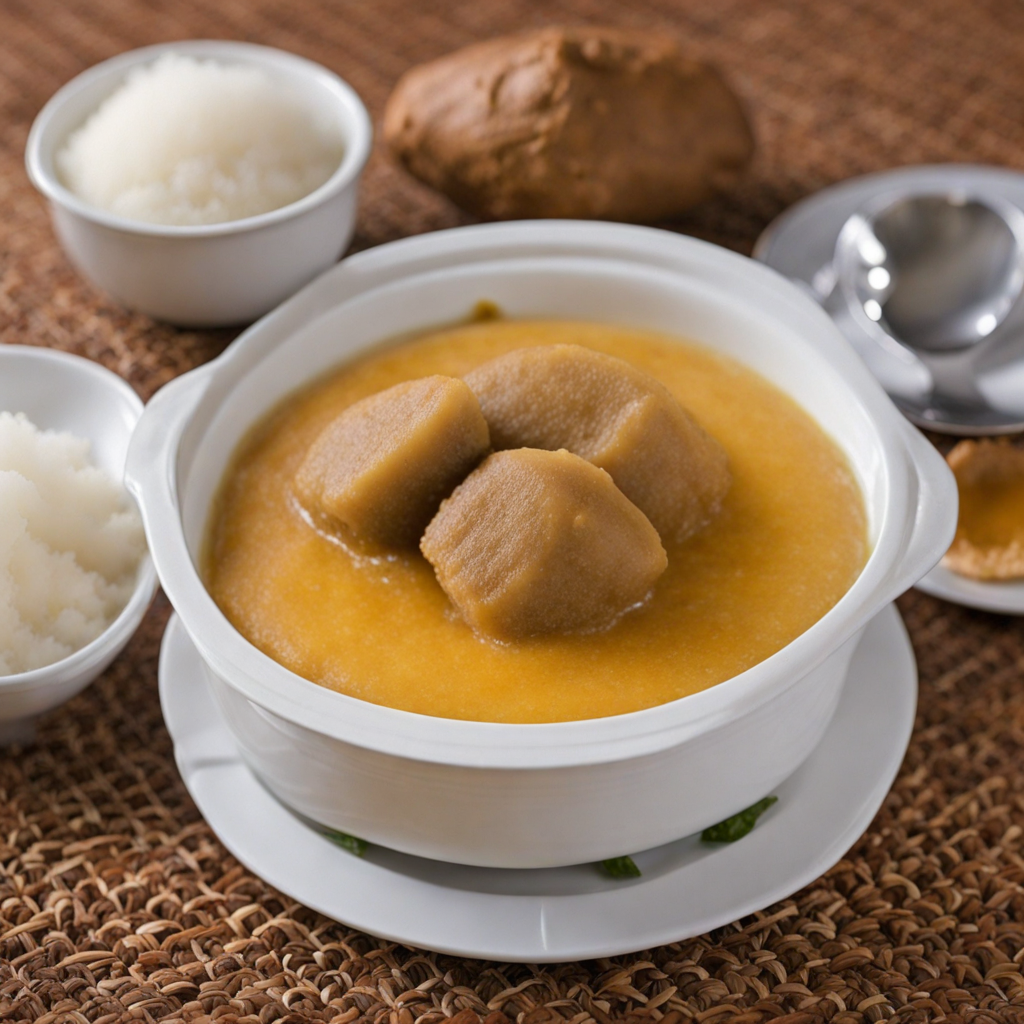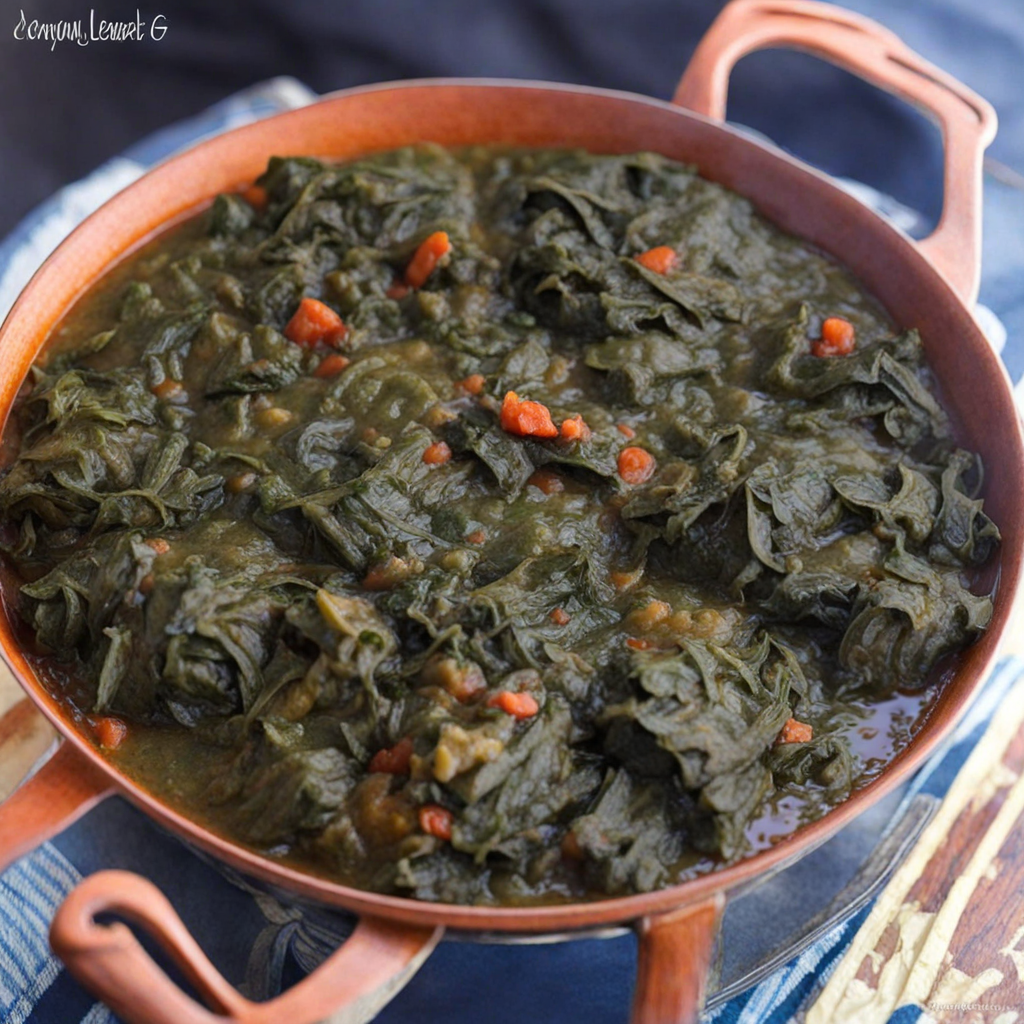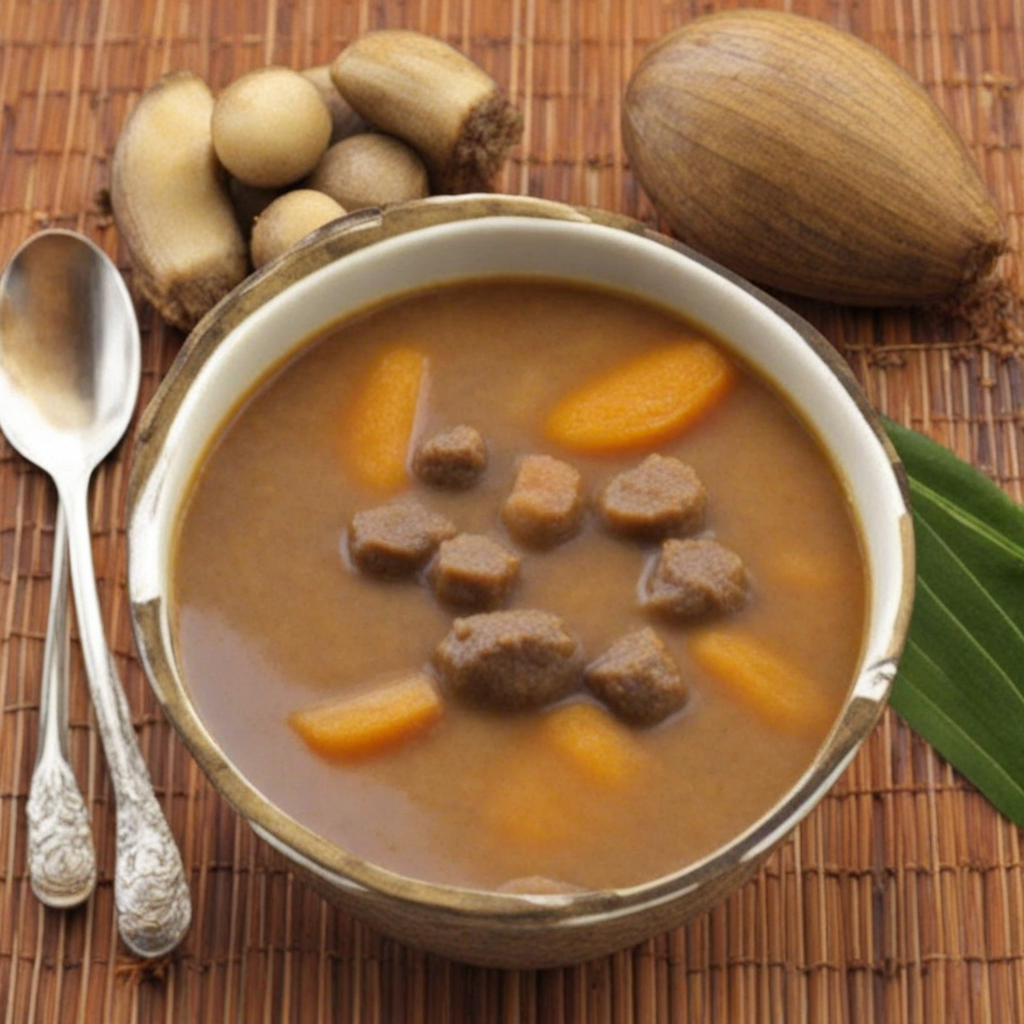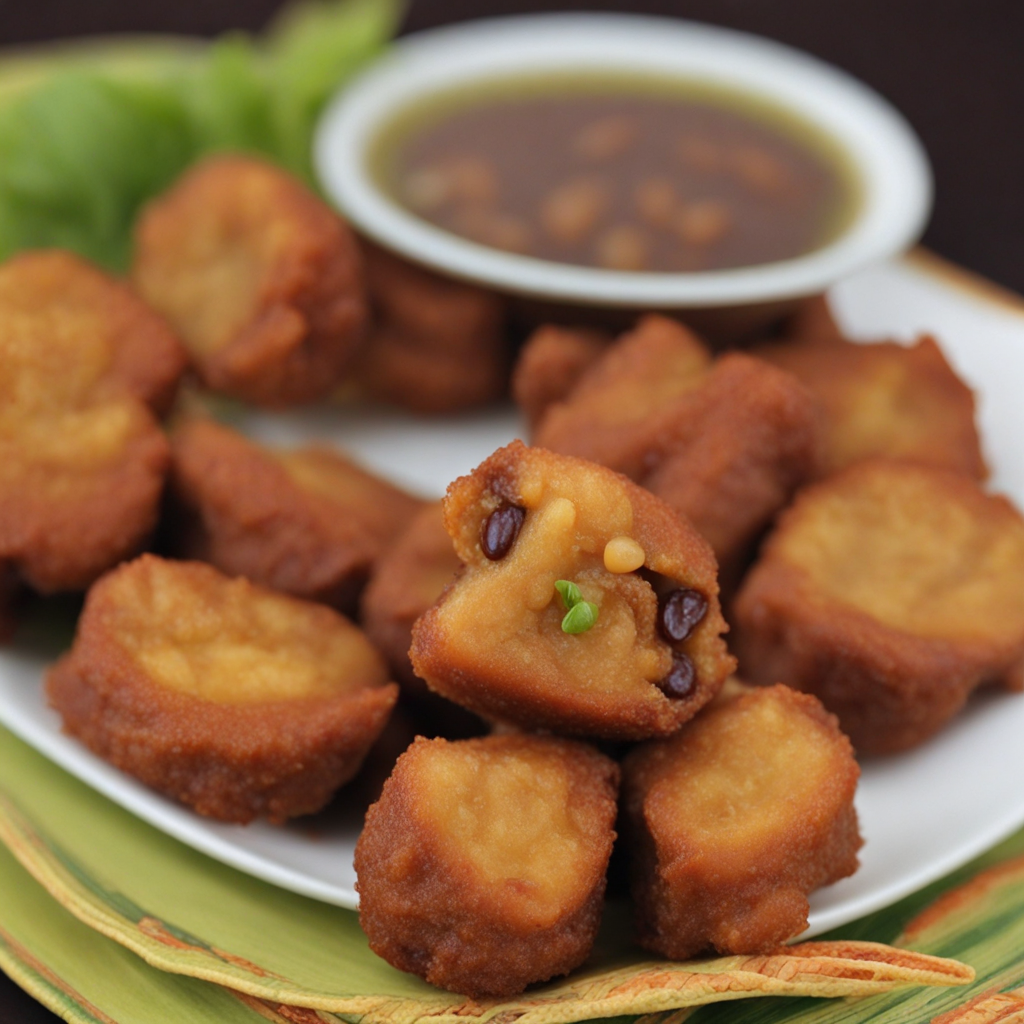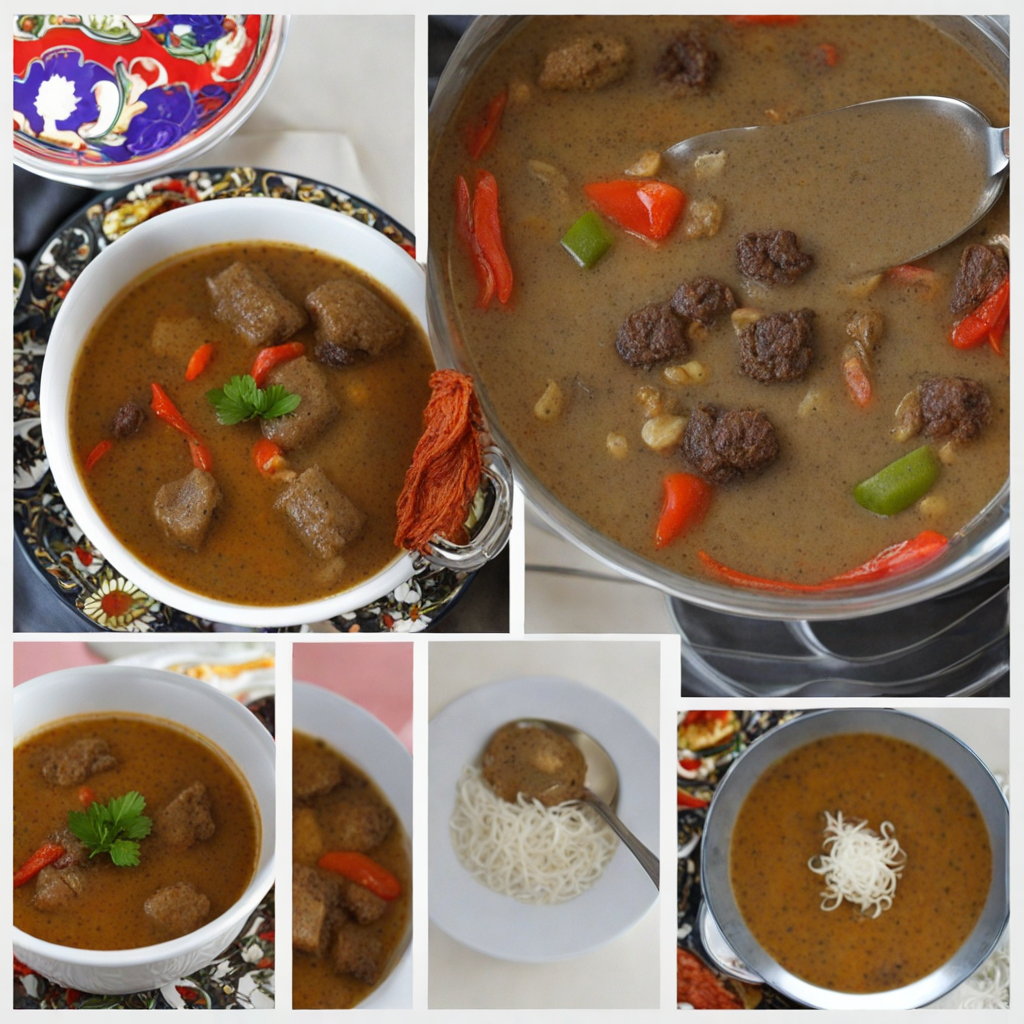Fufu
Fufu is a traditional dish from Equatorial Guinea that embodies the rich culinary heritage of Central Africa. This starchy staple is made primarily from cassava, yuca, or plantains, which are boiled until tender and then pounded into a smooth, elastic consistency. The result is a dense, dough-like texture that serves as a perfect accompaniment to a variety of soups and stews. The preparation of fufu is often a communal activity, bringing family and friends together to share in the labor and enjoyment of a fundamental part of their diet. The flavor of fufu itself is subtle, allowing it to absorb the delicious qualities of the dishes it accompanies. It has a mild, slightly nutty taste that balances well with the rich, savory flavors of Equatorial Guinean soups, such as peanut stew or spicy fish broth. This versatility makes fufu a beloved staple, as it can complement both meat-based and vegetarian meals. The act of dipping pieces of fufu into the accompanying sauce or stew creates a delightful combination of textures and flavors that is both satisfying and nurturing. In addition to its culinary appeal, fufu holds cultural significance in Equatorial Guinea, often symbolizing hospitality and community. It is not uncommon for families to gather around a pot of steaming soup and share fufu, fostering bonds and celebrating together. For anyone looking to discover a new taste, fufu offers not just a unique flavor experience but also a glimpse into the social fabric and traditions of Equatorial Guinea, making it a dish worth exploring.
How It Became This Dish
The History of Fufu in Equatorial Guinea Fufu is a staple food in various regions of Africa, but its presence in Equatorial Guinea is particularly significant, reflecting the nation’s rich cultural tapestry. This starchy staple, often made from cassava, yams, or plantains, has a history that intertwines with the social and cultural fabric of the region, showcasing the evolution of culinary practices over time. #### Origins of Fufu The term "fufu" is believed to derive from the Akan language of Ghana, where it refers to a similar starchy dish. However, the concept of fufu is not limited to one geographical area; variations exist across West and Central Africa. In Equatorial Guinea, fufu typically refers to a dish made from cassava, often accompanied by flavorful soups or stews. Cassava (Manihot esculenta), a root vegetable native to South America, was brought to Africa by Portuguese traders in the 16th century. Its ability to thrive in poor soil conditions and its resistance to drought made it an ideal crop for the African climate. As cassava spread across the continent, it became a fundamental ingredient, especially in regions like Equatorial Guinea, where it was quickly adopted and integrated into local diets. #### Cultural Significance Fufu is more than just a food item in Equatorial Guinea; it is a symbol of cultural identity and community. Traditionally, fufu is prepared through a labor-intensive process. The cassava roots are peeled, boiled, and then pounded into a smooth, elastic dough-like consistency. This labor-intensive preparation often becomes a communal activity, involving family members or friends, thus reinforcing social bonds. In many African cultures, food preparation is a communal affair, and fufu is no exception. The act of pounding the cassava can be a rhythmic and social event, often accompanied by songs and storytelling. This communal aspect emphasizes the importance of family and community in Equatorial Guinean culture. Fufu is typically served with a variety of soups or stews, often made with fish, meat, or vegetables. These accompaniments are rich in flavor and nutrition, embodying the culinary traditions of the Bantu peoples who inhabit Equatorial Guinea. The combination of fufu with savory stews symbolizes the balance between carbohydrates and proteins, reflecting a holistic approach to nutrition that has persisted through generations. #### Development Over Time As Equatorial Guinea has experienced significant historical changes, so too has the preparation and consumption of fufu. The colonial period, beginning in the late 19th century, brought about significant transformations in agricultural practices and food availability. Spanish colonial rule, which lasted until the mid-20th century, introduced new crops and agricultural techniques to the region. However, traditional food practices like fufu remained resilient, adapting to the influences while retaining their core significance. Post-independence in 1968 saw a resurgence of national pride in local traditions, including culinary practices. The government began to promote traditional foods as a means of cultural preservation and economic development. Fufu, as a staple, became a focal point in this movement, celebrated in festivals and community events. During this time, the dish became emblematic of Equatorial Guinea's cultural identity, serving as a reminder of the country’s agricultural roots and the importance of local food systems. #### Regional Variations and Contemporary Context While cassava remains the primary ingredient in fufu, regional variations have emerged, reflecting local tastes and ingredients. In the Bioko Island region, for example, fufu might be prepared with plantains or yams, often flavored with local spices or incorporated into dishes featuring seafood—an abundant resource in the coastal areas. The combination of fufu with rich seafood stews demonstrates the intersection of land and sea, showcasing the diverse natural resources of Equatorial Guinea. In contemporary Equatorial Guinea, fufu continues to hold a vital place in daily life. Urbanization has led to changes in food preparation, with some opting for quicker, more convenient methods. However, many families still honor traditional practices, especially during significant events such as weddings, religious ceremonies, and national celebrations. The preparation of fufu during these occasions is often seen as a way of preserving heritage and cultural memory. Globalization has also influenced the perception and consumption of fufu. As culinary trends spread across the globe, fufu has begun to gain recognition beyond the African continent. Its unique texture and adaptability have attracted the attention of chefs and food enthusiasts, leading to innovative interpretations in fusion cuisine. Yet, despite these modern adaptations, the essence of fufu as a cultural and communal dish remains intact. #### Conclusion Fufu is not merely a food; it is a reflection of the rich history and cultural identity of Equatorial Guinea. From its origins as a staple made from cassava to its role in communal bonding and celebration, fufu encapsulates the essence of Equatorial Guinean life. As the country continues to navigate the complexities of modernity while honoring its traditions, fufu stands as a testament to the resilience of its people and their enduring connection to their culinary heritage. Through the lens of fufu, we can appreciate the intricate relationship between food, culture, and history in Equatorial Guinea. It represents not just sustenance, but a living tradition that nourishes the body and soul, binding communities together and preserving the rich tapestry of a unique cultural identity. As we celebrate the flavors of Equatorial Guinea, we are reminded of the stories and histories that each dish carries with it—a delicious narrative of resilience, unity, and heritage.
You may like
Discover local flavors from Equatorial Guinea


